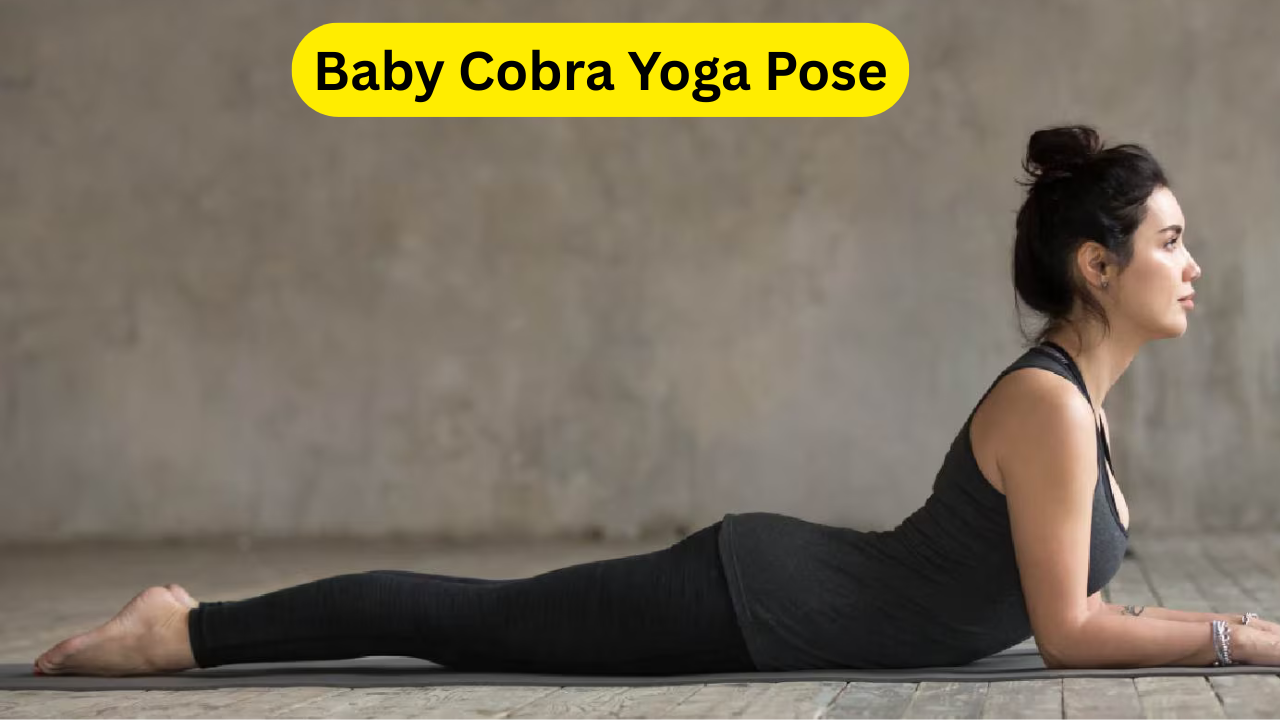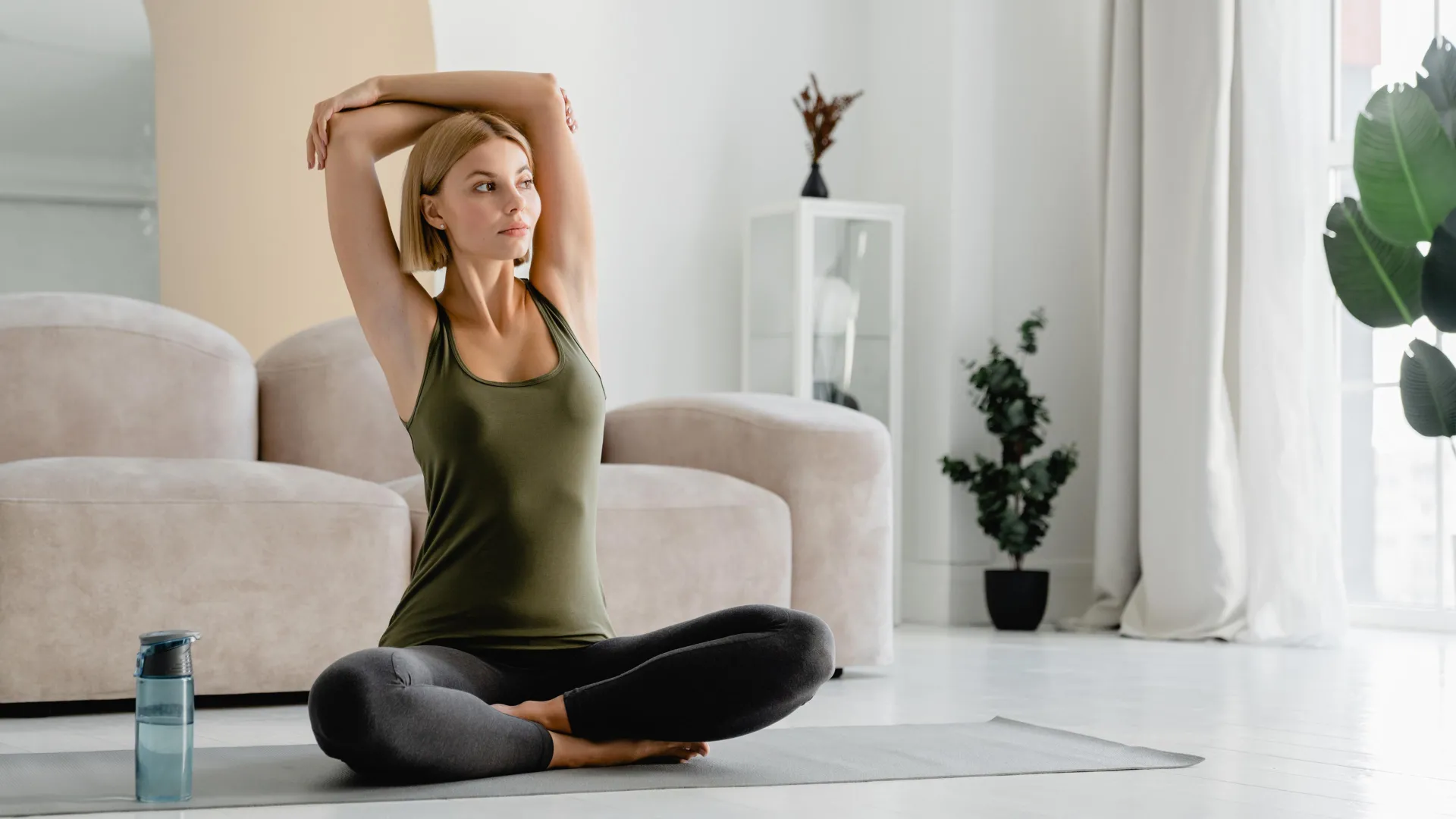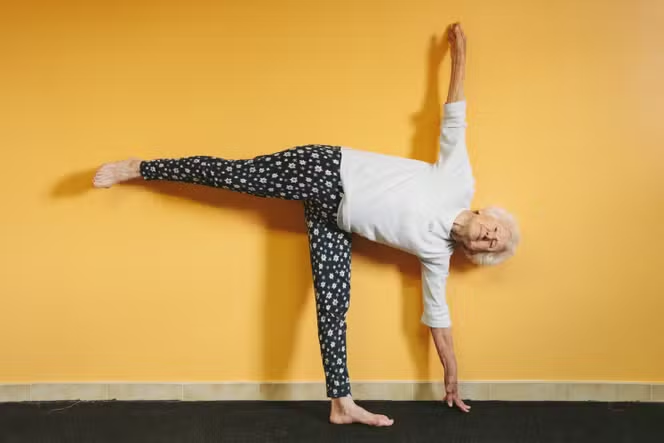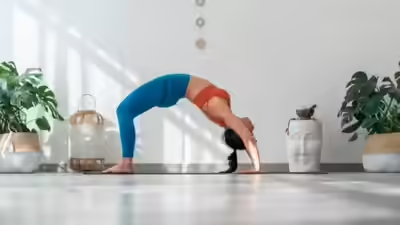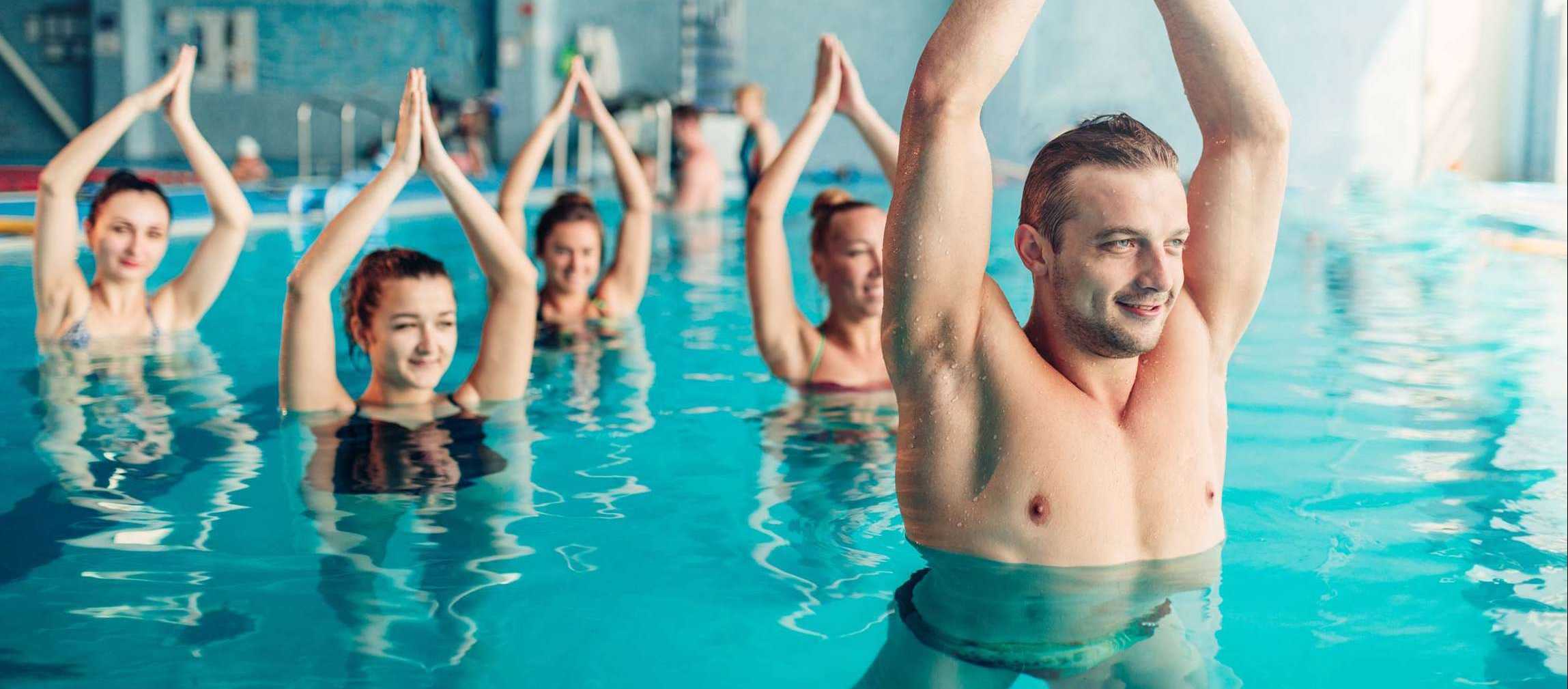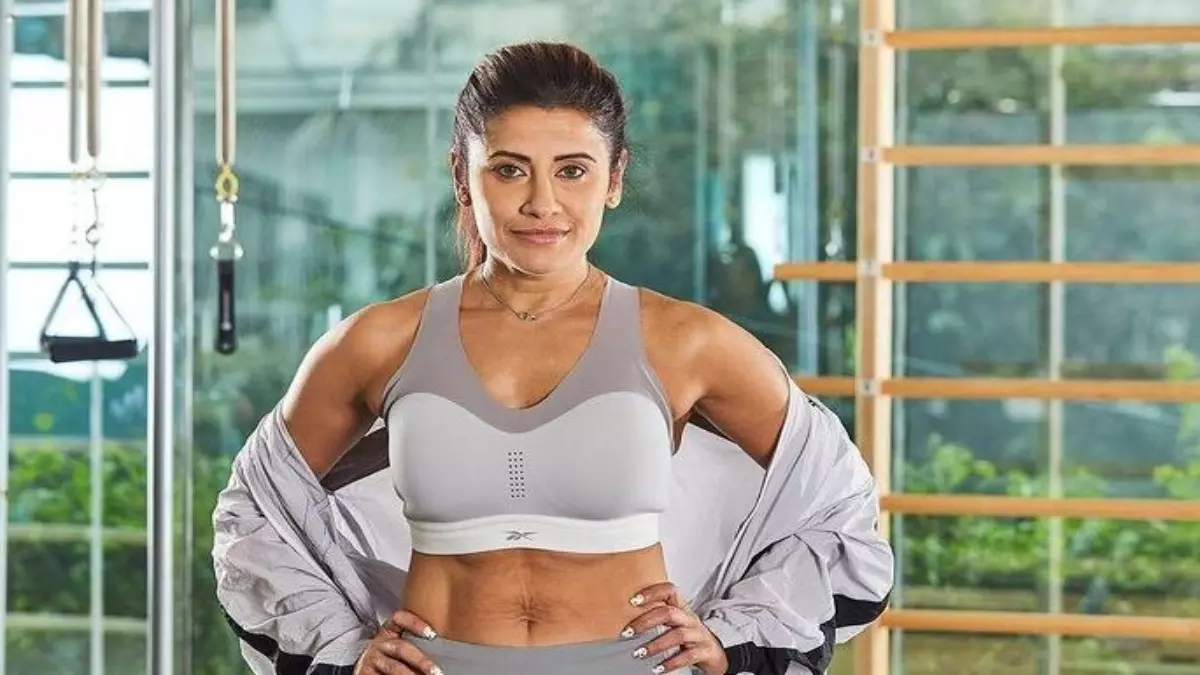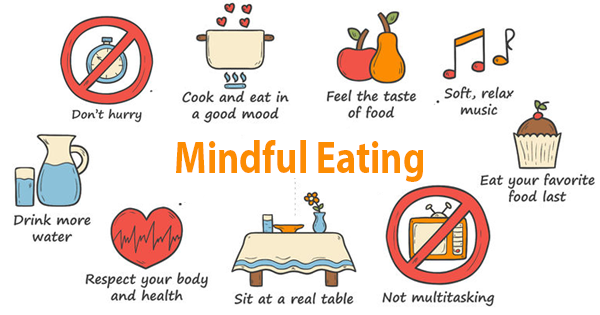Baby Cobra Yoga Pose: Back pain and poor posture have become all too common in today’s sedentary lifestyle. Whether it’s long hours at a desk job or excessive screen time, our spines are suffering from lack of movement and engagement. While there are many back-strengthening exercises, yoga offers one of the most natural and effective solutions—especially for beginners. Among the easiest and most beneficial postures is the Baby Cobra Yoga Pose, also known as Ardha Bhujangasana or Half Cobra Pose. This gentle backbend helps relieve back tension, improve spinal flexibility, and lay the foundation for more advanced yoga poses like Bow Pose and Wheel Pose.
The Baby Cobra Pose is a beginner-friendly modification of the classic Bhujangasana (Cobra Pose). Unlike the full version, Baby Cobra involves a more subtle lift, relying less on the arms and focusing more on spinal engagement and breathwork. It gently stretches the lower back, opens the chest, and strengthens the upper body without risking overextension. This makes it an excellent entry point into the world of yoga backbends, especially for those dealing with lower back pain, stiffness, or tight hip flexors.
Incorporating Ardha Bhujangasana into your daily or weekly routine not only builds spinal strength but also aids in better digestion, improves lung capacity, and enhances emotional well-being. It activates the parasympathetic nervous system—helping you relax and recharge. Whether you’re new to yoga or looking for a restorative pose to ease muscle tension, the Baby Cobra is the perfect place to begin. Let’s explore this pose in depth—from benefits to step-by-step instructions, variations, and safety tips.
What is Baby Cobra Pose (Ardha Bhujangasana)?
Ardha Bhujangasana, also known as Baby Cobra Pose, is a gentle backbend where you lie on your belly and lift your chest using minimal support from the arms. It’s designed to strengthen the back muscles, improve spinal alignment, and activate the abdominal area. It’s commonly used in yoga sequences as a preparatory pose before transitioning into deeper backbends.
Unlike the full Cobra Pose, which involves straightening the arms fully, Baby Cobra keeps the elbows bent and close to the sides, allowing for a smaller lift and more spine-focused movement. This makes it especially useful for:
- Beginners
- People recovering from lower back injuries
- Those looking for restorative or low-impact backbends
Benefits of Baby Cobra Pose
1. Strengthens the Lower Back
The primary focus of Ardha Bhujangasana is the engagement of the spinal extensors. This helps counteract the effects of poor posture, especially if you sit for long hours or slump over screens.
2. Improves Posture and Flexibility
Regular practice opens up the chest and shoulders, reducing slouching and hunching. It also gently stretches the front of the body and improves spinal flexibility.
3. Enhances Digestion
By gently compressing and massaging the abdominal organs, this pose can stimulate digestion and reduce bloating or sluggish metabolism.
4. Boosts Lung Capacity
Opening the chest allows for deeper breathing. This improves oxygen flow, helping with stress reduction and boosting energy levels.
5. Activates Core and Pelvic Floor
Though subtle, Baby Cobra requires core stability. Engaging the core and pelvic floor muscles during the pose helps develop internal strength and body awareness.
How to Do Baby Cobra Pose: Step-by-Step Instructions
Step 1: Start on Your Belly
- Lie flat on your stomach on a yoga mat.
- Extend your legs back, tops of the feet pressing into the mat.
- Place your hands under your shoulders, elbows bent and tucked close to your sides.
Step 2: Engage Your Core and Lift
- Inhale deeply, press lightly through your palms, and lift your chest off the ground.
- Keep your elbows bent and your ribs on the floor.
- Engage your lower back muscles and core for support.
- Keep your gaze forward or slightly upward—avoid cranking the neck.
Step 3: Hold and Breathe
- Hold the pose for 20–30 seconds, taking deep breaths.
- Focus on lengthening the spine rather than height.
- Slowly lower yourself on an exhale.
Precautions and Contraindications
- Avoid this pose if you have recent abdominal surgery, hernia, or spinal disc injuries.
- Pregnant women should consult a doctor before attempting this pose.
- Do not push your body into a deeper backbend—baby cobra is about controlled movement, not how high you lift.
- Always warm up with gentle stretches to prepare your spine and shoulders.
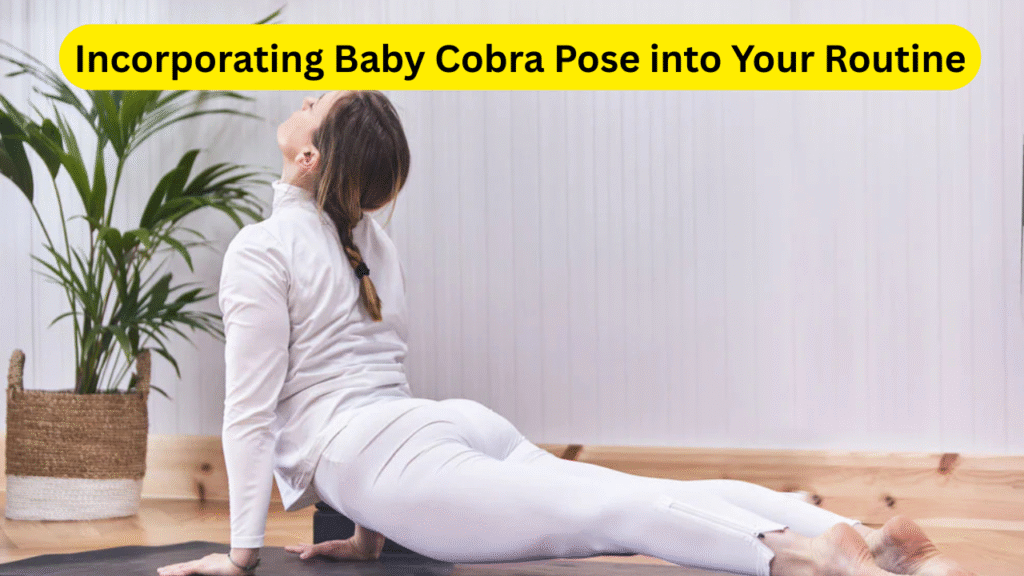
Variations and Modifications
- Use a folded blanket under the hips for support.
- Place a bolster under the chest if you find lifting too strenuous.
- Mini Cobra: Keep the forehead barely lifted off the ground with active shoulder engagement for a micro version.
- Advanced Flow: Pair Baby Cobra with Cat-Cow stretches or Child’s Pose for a balanced back routine.
Also read: Bugatti Chiron on ANRKY XR| Series XR-105 Monoblock Wheels by Wheels Boutique
Incorporating Baby Cobra Pose into Your Routine
Baby Cobra is ideal as:
- A warm-up for deeper backbends
- A cool-down after intense workouts
- Part of a morning yoga routine to wake up the spine
- A rehabilitative pose for back injuries
- A desk yoga stretch for office-goers
Sample Routine:
- Cat-Cow (1 minute)
- Child’s Pose (1 minute)
- Baby Cobra (3 rounds of 20 seconds)
- Downward Dog (30 seconds)
- Seated Forward Fold
Baby Cobra Yoga Pose Conclusion
The Baby Cobra Pose (Ardha Bhujangasana) is an essential yoga pose that offers immense benefits for your spine, posture, and overall wellness—without requiring advanced flexibility or strength. It’s the ideal entry point into yoga backbends and can be practiced by people of all ages and fitness levels. In a world where slouching and screen fatigue are common, taking just a few minutes to practice this pose can improve your spinal health and invigorate your day.
By building awareness in your lower back and activating your core muscles, Baby Cobra helps you develop a stronger, more resilient back. It gently opens your chest and lungs, improving oxygen intake and giving you a fresh boost of energy. Plus, its role in digestion and posture correction adds holistic value to your wellness routine.
This pose is not about how high you lift but how well you align and breathe. Whether you are recovering from injury, returning to yoga after a break, or just getting started, Ardha Bhujangasana welcomes you with simplicity and safety.
Include it in your daily practice as a standalone stretch or combine it with other poses to create a balanced yoga flow. With consistency, you’ll notice improved mobility, reduced back pain, and better control over your posture.
So next time your back feels tight or your energy dips after long hours of sitting, lie down on your mat, take a deep breath, and rise gently into the soothing embrace of the Baby Cobra Pose.
Baby Cobra Yoga Pose FAQs
1. Is Baby Cobra Pose safe for people with lower back pain?
Yes, Baby Cobra is one of the safest yoga poses for lower back pain. It gently activates and strengthens the spinal muscles without putting too much pressure on the lumbar spine. However, it’s best to consult a healthcare professional if you have a chronic back condition.
2. How is Baby Cobra different from Full Cobra Pose?
Baby Cobra, or Ardha Bhujangasana, involves lifting only the upper chest using the back muscles and minimal arm support. In Full Cobra, the arms are straightened, lifting the entire torso higher, which requires more back flexibility and upper body strength.
3. Can I practice Baby Cobra Pose daily?
Absolutely! Baby Cobra can be practiced daily as part of your morning routine, warm-up, or cool-down. It’s a low-impact pose that can help improve your posture, flexibility, and mental calmness when done consistently.
4. What muscles are engaged in Baby Cobra Pose?
This pose primarily engages the erector spinae (lower back muscles), rhomboids (upper back), glutes, triceps, and abdominal muscles. It also gently stretches the chest, shoulders, and abdominal organs, providing full-body engagement.
5. Can Baby Cobra help with digestion and bloating?
Yes, the gentle pressure of the abdomen against the floor stimulates the digestive organs. Practicing Baby Cobra regularly can aid in reducing bloating, improving digestion, and relieving constipation due to increased blood flow in the gut area.

I am the founder and writer of Healthwali.com. Here I personally publish every update, Fitness and Yoga guide , read more for you – that too in easy language.
